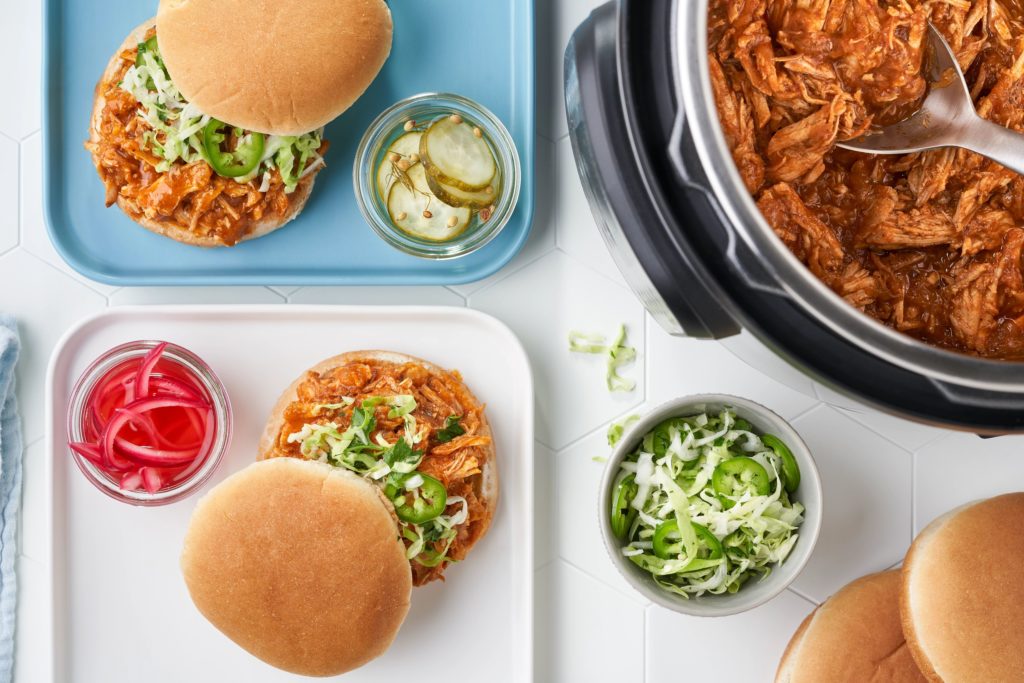Eating well on a budget varies from home to home. Families with young kids have different challenges than families with older kids. A foodie who loves exploring new restaurants will have priorities that are distinct from someone who just wants a meal in a hurry. Even though every home is unique, we all need options that are delicious, affordable, and shared with the people we care about. Learn how to balance your budget and nutrition goals with tips from our Nutrition & Health Sciences team to make meals at home a bit easier—but still delicious.
Living alone, empty nesters, or barely home
Preparing an affordable and balanced meal can feel overwhelming for people who live on their own, have fewer mouths to feed, or are not home often. Use these tips to make it easier.
- Shop sales and individually freeze items. This lets you thaw only what you need.
- Balance fresh, seasonal produce with frozen and canned options to keep your budget on track.
- Grill or cook in bulk on a day you are home and repurpose the ingredients throughout the week.
- Cook once, eat twice (or more). Most recipes are for 4 or more servings, so freeze leftovers.
- Remember, a balanced dinner is not based on how much time you spend in the kitchen or how many pots you dirty. A simple sandwich paired with yogurt or fruit does the trick.
- Instead of hitting the drive-through, pair a Well Yes! POWER Soup Bowl with crackers and a side salad. That’s ready in minutes and likely saves you money.
Try this recipe that takes only 5 minutes to prep:
Foodies, who love to eat out
Food costs add up quickly for people who love trying the newest restaurants and trends. Here are some tips to keep the food explorer—we love you—in check.
- Set a weekly dollar limit on away-from-home eating and experiment with new recipes at home the rest of the time. Eating in more often can be better for your bank account and your health.
- When you find a new beverage or snack from a local shop and you’re hooked, check out the ingredient list, explore similar recipes online, and experiment by making it at home.
- When trying a new recipe that uses many spices, look for a spice blend to cut down on the cost and save space in your cupboard.
- When a recipe calls for a higher cost ingredient, find another recipe that uses that same ingredient, so you can make two different meals.
This recipe is full of flavor, only mildly spicy and is ready in 30 minutes:
Households with picky eaters
Dinner can be an unpredictable meal for those with small children—especially when they’re also picky eaters! Here are some tips to help you cut back on food waste and make mealtime a little easier.
- Serve smaller portions to little ones. This is less overwhelming for kids and can help cut back on waste. They can always take more of something they enjoy!
- Make one meal instead of multiple meals to accommodate different palates. Offer a variety of foods at your meals and model eating them yourself.
- When you want to introduce something new at a meal, offer it with familiar and well accepted foods.
- Buy your family’s favorite foods and brands in bulk when they are on sale, search online circulars, and comparison shop for the best prices.
- Shopping with kids can lead to more impulse buying in store. If possible, keep kids at home when you go to the grocery store or shop online.
- Introduce your family to plant-based proteins. This can be a budget-friendly option compared to many animal proteins.
This better-for-you recipe steps up your traditional spaghetti and meatballs:
Households with hearty appetites
Households with hearty appetites can make it hard to keep the pantry and fridge stocked. Here are some ways to make the most of your budget.
- Think cautiously when buying in bulk and stick to nutritious staples. Reach for bulk items like large yogurt containers, whole grains, canned or frozen fruits and veggies to help you stay on track with nutrition and your budget.
- Compare the unit price among foods. This is usually listed near the actual price for the product. Unit pricing, like cost per ounce or pound, allows you to compare prices between similar products without doing the math yourself. For example, buying a large container of peanut butter versus a smaller size, is usually cheaper per ounce.
- Buy snacks like nuts, crackers, and popcorn in multi-serve bags, then portion out into single serve containers/baggies. This helps the family understand portion control and encourages mindful eating.
- Incorporate more dishes that feature beans and eggs—both are budget-friendly protein sources.
This recipe features a simple way to add some beans into mixed dishes:
Every home is different, but we can all use help making our meals more delicious, convenient, and affordable. If you’re looking for more tips on how to eat on a budget, check out our Budget-Friendly Meal Plans and more tips from our nutrition team.





